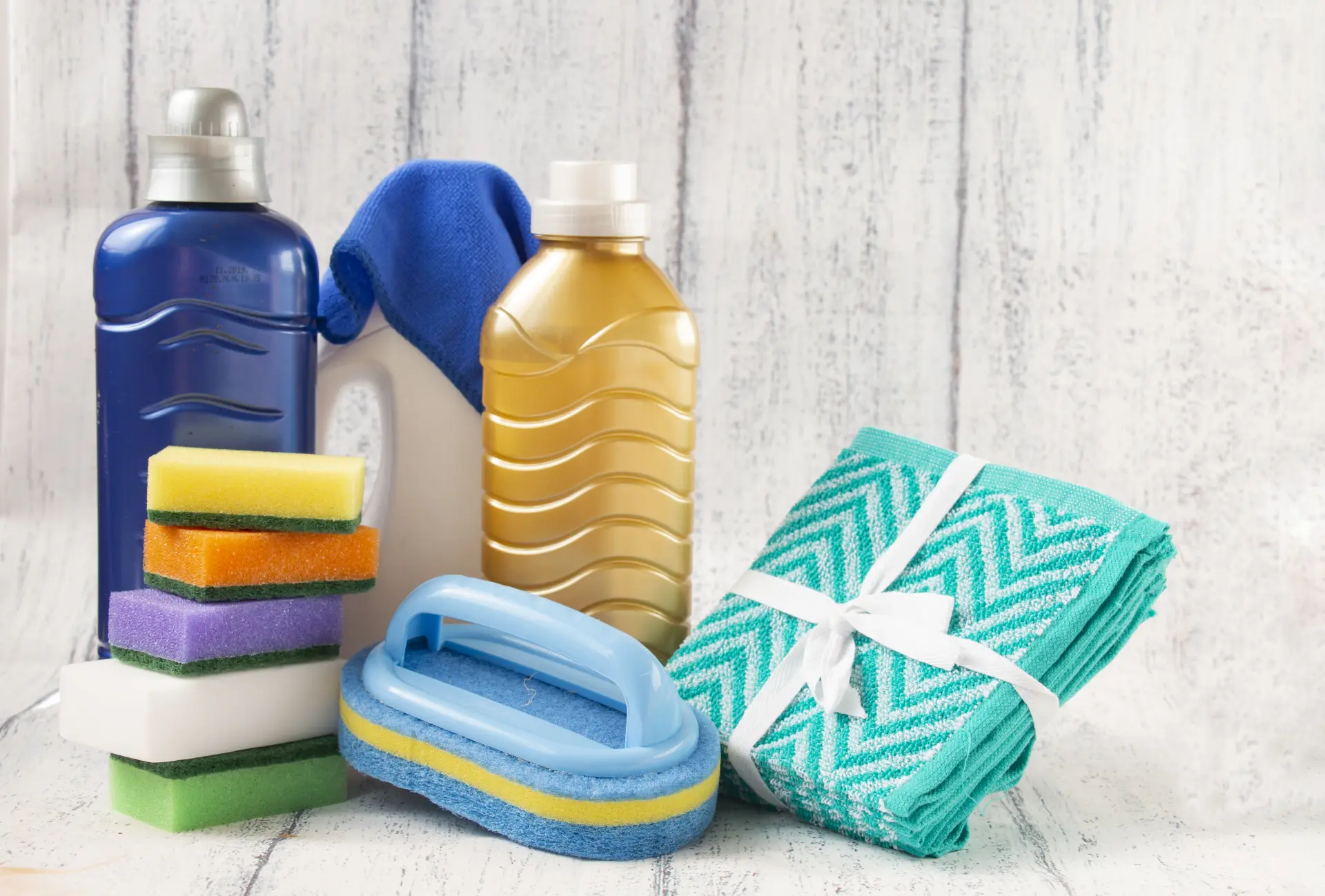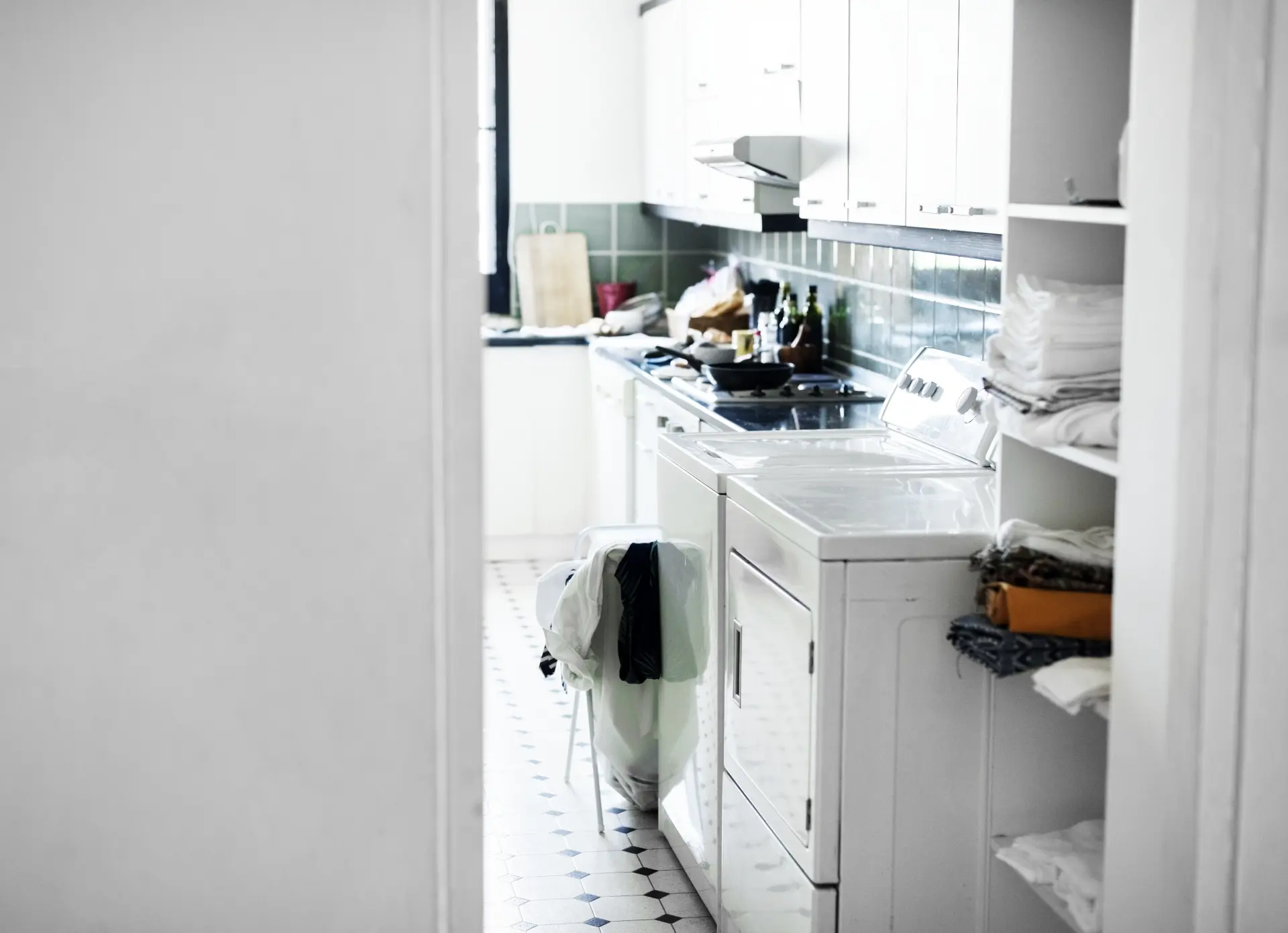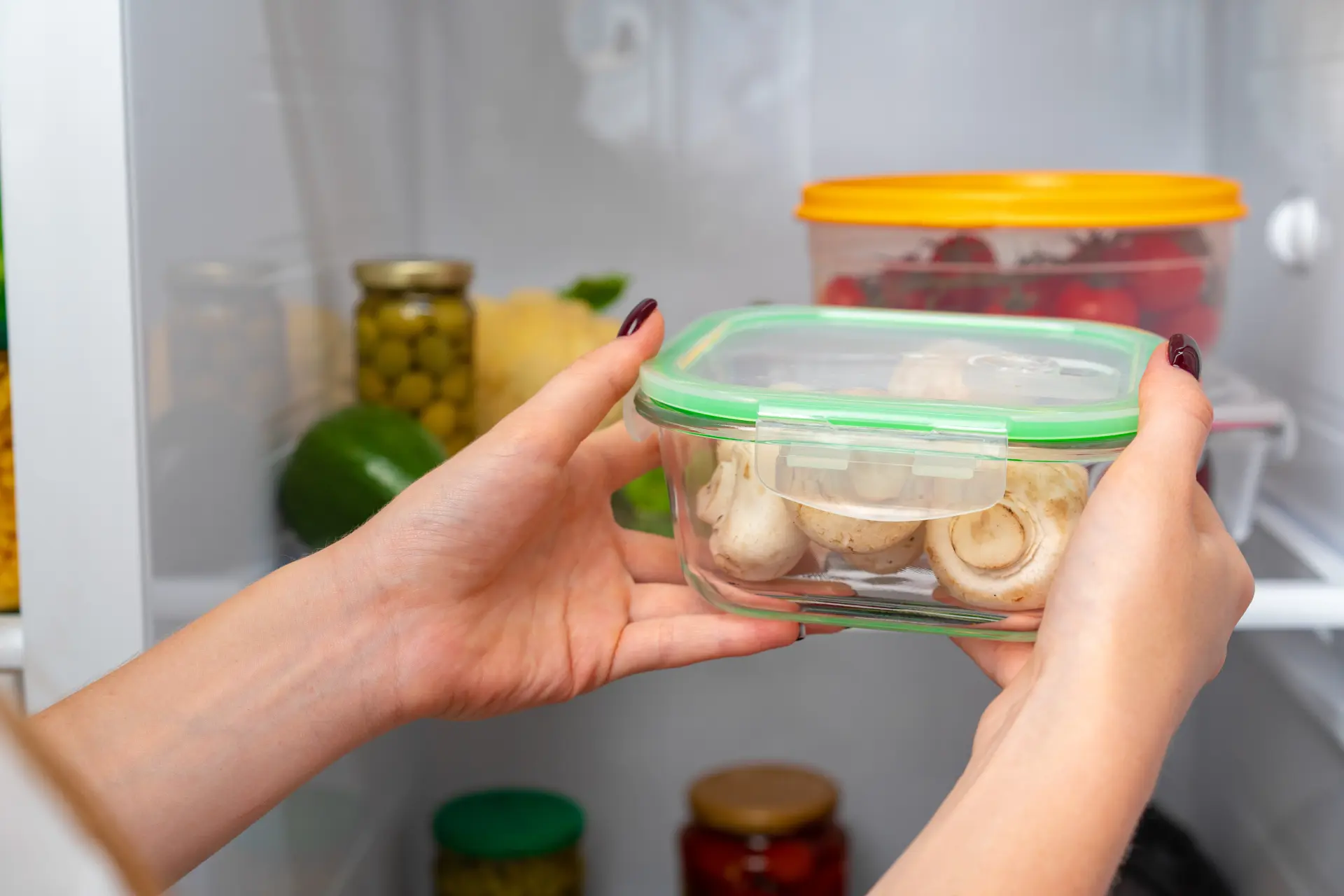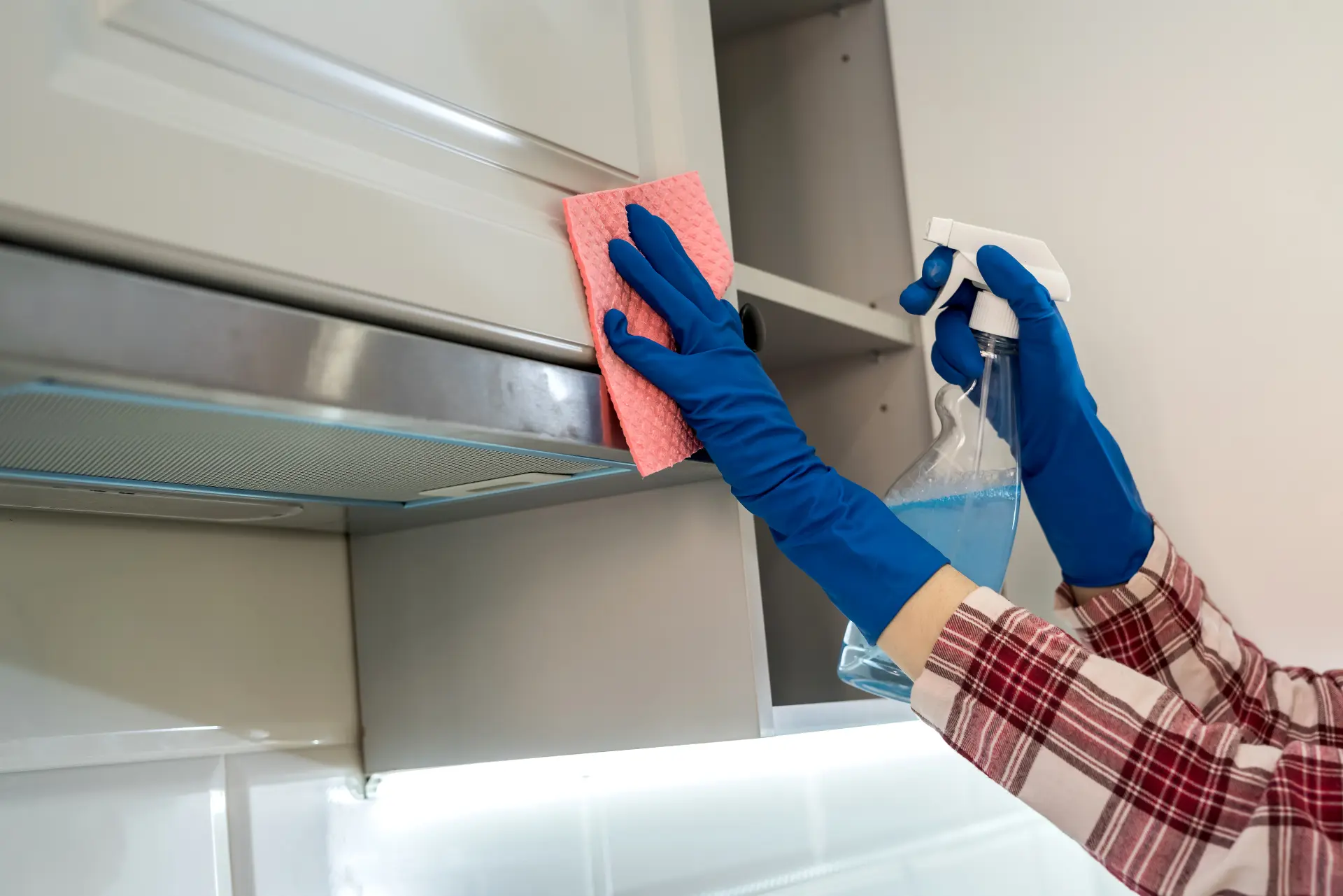Struggling with kitchen hygiene? Here is an expanded, plain-English guide to keep your UK kitchen fresh, sanitary, and safe for food preparation. The focus is on simple steps that help prevent germs from spreading, reduce the risk of food poisoning, and support good food hygiene every day.
Clear and Prepare the Area
Before cleaning, remove all items from the work surfaces. This includes food, utensils, small appliances, and decorations. Empty bins and put away anything that does not belong on the worktops. Doing this helps you clean every surface and avoids moving dirt from one place to another. Wash your hands with soapy water, then put on clean gloves if you use them.
If you are near a food preparation area, make sure no food is left out. Check for sticky spills, grease, or dried-on food that needs extra attention. Preparing well saves time and makes each clean more effective.
Choose Suitable Cleaning Products
Pick cleaning products that match the surface you are cleaning, such as laminate, stainless steel, granite, or wood. Always read the label and follow the instructions. For most jobs, warm soapy water or a mild kitchen cleaner will clean everyday mess and help remove grease. Avoid harsh bleach on work surfaces used for food unless the label says it is safe for kitchen use.

Natural options like white vinegar and baking soda can help with some tasks, but avoid using acids on stone.
Use clean cloths or sponges and change them often, as dirty tools spread germs. Microfibre cloths trap dirt well.
Make sure any antibacterial spray you use is food-safe and follow the contact time on the label to deal with harmful bacteria.
Remove Loose Debris and Stains
Brush crumbs and food scraps into a bin before you start wet cleaning. This prevents debris from spreading. For stains or sticky patches, use a soft cloth with warm, soapy water and rub gently. Avoid rough pads that can scratch the surface. For stubborn marks, place a damp cloth on the spot for a few minutes, then wipe, rinse with clean water, and dry to prevent water marks.
Clean from Top to Bottom

Cleaning higher areas first stops dirt dropping onto places you have already cleaned.
Start with cupboard tops, shelves, and splashbacks, then move to worktops, the hob, and the sink.
Wipe handles, switches, and cupboard doors because they often carry bacteria. Finish with lower units and the floor.
Change the water or solution when it looks dirty. This method helps keep kitchen surfaces clean and ready for food preparation.
Sanitise to Eliminate Germs
After cleaning, sanitise work surfaces to reduce germs that can cause illness. Use a food-safe sanitiser and follow the label. Spray, leave for the stated contact time, then wipe or let it air dry as directed. Focus on high-touch areas such as boards, handles, taps, and worktops. Repeat after handling raw meat and other raw food to lower the chance of cross contamination.
Handwashing and Personal Hygiene

Good kitchen hygiene starts with clean hands.
Wash your hands with warm water and soapy water for 20 seconds before you cook, after handling raw meat, after touching bins, and after using the toilet.
Dry hands with a clean towel or disposable paper.
Keep nails short and tie back long hair. If you are ill, avoid cooking for others to protect their health.
Prevent Cross Contamination
Keep raw food separate from ready-to-eat foods. Use separate chopping boards for raw meat, cooked foods, vegetables, and bread, or clean and sanitise the same board between uses. Make sure knives and other utensils used for handling raw items are cleaned and sanitised before they touch cooked food. Store raw meat on the lowest shelf of the fridge in a sealed container to prevent drips that spread germs.
Care for Chopping Boards and Utensils
Boards and utensils need careful cleaning to prevent the spread of bacteria. Wash with hot water and detergent, scrub both sides, rinse well, and allow to air dry. Sanitise after handling raw meat, poultry, or fish. Replace boards that have deep cuts where germs can hide. Check wooden utensils for cracks and replace them if needed.
Sinks, Cloths, and Sponges

The sink is a high-risk area because grease and food waste can collect there. Clean the sink, plug, and drain daily with a suitable cleaner, then sanitise.
Cloths and sponges can hold bacteria, so rinse after each use, wring out, and let them dry.
Wash reusable cloths at a high temperature at the end of the day. Replace sponges often to avoid a build-up of germs.
Fridge and Freezer Hygiene
Keep the fridge between 0°C and 5°C to slow the spread of bacteria. Check the temperature often and adjust if needed. Wipe up spills straight away and clean shelves and seals regularly. Store raw meat at the bottom and keep cooked foods higher up. Label items with the date you open them, and follow use-by dates to support food safety. Defrost the freezer when ice builds up and clean it inside with a food-safe cleaner.
Cooking, Cooling, and Reheating
Cook foods to the right temperature so harmful bacteria are destroyed. Make sure meat, poultry, and leftovers are steaming hot all the way through, and that juices run clear. Cool leftovers quickly and store them in the fridge within two hours. Reheat only once, and ensure the food is piping hot before serving.
Storing Food and Checking Dates

Store foods in sealed containers to prevent the spread of odours and germs. Keep dry foods in a cool, dry cupboard away from moisture.
Check use-by and best-before dates when you plan meals. Rotate stock, placing newer items at the back so you use older ones first.
If you are unsure about a food’s safety, do not eat it. It is important to check labels for storage information and allergy advice.
Daily, Weekly, and End-of-Day Routines
Set simple routines to keep on track. At the start of each day, wipe kitchen surfaces and worktops so you have a clean space for food preparation. During cooking, tidy as you go to avoid clutter. At the end of the day, wash dishes, clean the hob, wipe the sink, and sanitise high-touch areas. Each week, clean the fridge, check dates, and remove old food. These habits help prevent the build-up of dirt and reduce the risk of contamination over time.
Managing Food Waste
Deal with food waste quickly to avoid smells and pests. Use a caddy with a lid, empty it often, and clean it with warm soapy water. Rinse recycling if required in your area so it does not attract insects. Make sure bins are lined, stored away from food preparation, and cleaned regularly.
Reading Labels and Product Information

Always read the label on cleaning products and follow the instructions for safe use and correct contact time.
Keep products away from food and store them out of reach of children.
Check safety symbols and find the right product for each surface to avoid damage.
When to Replace Kitchen Items
Over time, things wear out. Replace cracked boards, frayed cloths, warped utensils, and damaged seals on fridge doors. If a non-stick pan is badly scratched, replace it. Keeping tools in good condition helps maintain kitchen hygiene.
What To Do If Someone Is Ill
If someone in your home has a tummy bug, increase cleaning and sanitising, especially in the kitchen and bathroom. Wash towels often, avoid sharing utensils, and make sure hands are washed well. This helps prevent the spread of germs and protects others.
Quick Problem-Solving Guide
If you notice strong smells, stains that keep coming back, or sticky grease on surfaces, increase cleaning frequency and use suitable products. Make sure you rinse and dry properly. If you find mould, clean it with a product that is safe for the surface and improve ventilation. If you keep seeing signs of pests, seek professional help.
Maintaining Hygienic Kitchen Surfaces
Keeping kitchen surfaces clean and sanitised is a key part of kitchen hygiene. By handling raw ingredients carefully, washing hands at the right times, and making sure tools and storage are clean, you help prevent cross contamination and support good food safety.
Are you a landlord or a business owner requiring professional commercial kitchen cleaning services? We offer deep kitchen cleaning services for rental accommodation and offices throughout Caernarfon, Anglesey and Gwynedd.


